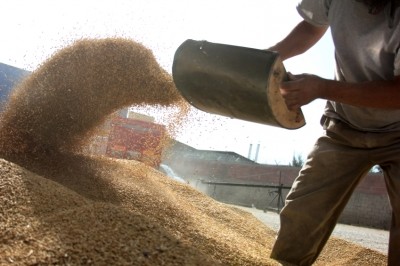US, Canadian feed approval processes set to be overhauled

“The multiple [US] approval processes for feed have been a challenge to the industry, however the FDA [US Food and Drug Administration] is working to clarify the regulatory position of each of these routes,” said Winnie Ng, scientific and regulatory consultant, Intertek in a recent webinar. “So it looks like we’re moving toward more food additive petitions and GRAS substances while the future of AAFCO [Association of American Feed Control Officials] ingredients is still under discussion.”
In Canada, the entire regulatory system is going through a review and update that is expected to be finished and published by the end of 2017, she said.
The proposed changes would bring the country into better alignment with regulations in other countries, said Ng. The work seeks to reduce regulatory burden while maintaining safety.
US feed regulatory landscape
In the US system, feeds or feed ingredients can be approved for use through one of three routes – a food additive petition (FAP), AAFCO ingredient definition or GRAS [Generally Recognised As Safe] notification, said Brandon Walters, another Intertek regulatory consultant.
“Things to consider would be the type of ingredients – food additives have more complex safety profiles,” he said of picking a pathway. “Whereas, those of more uncomplicated origin, or with a lower toxicological concern usually go through AAFCO definitions or GRAS.”
In the GRAS system, a feed ingredient is reviewed by an expert panel and information is published and reviewed by the FDA's Center for Veterinary Medicine (CVM) with the goal of receiving a ‘no questions’ letter, he said. However, the system is not as popular and some states may not recognize the status.
“In terms of the GRAS process, very few notifications have been filed with the CVM, and of those that have been filed, less than half have received favorable outcomes, especially when compared with human food ingredients,” said Walters.
US roadmap
The FDA, essentially, wants to align the three routes to speed up market approval time.
The future legal status of AAFCO legal classifications is currently being discussed, said Walters. The current memorandum of understanding (MOU) between AAFCO and the CVM has been extended until January 2017.
"And because of the quality and quantity of data required for FAP and AAFCO ingredient definitions is so similar and because of the resource burden and review times for the CVM being so similar, the future status of AAFCO notifications is somewhat uncertain," said Walters.
The FDA, through a proposal including a public comment period, is developing standards and methods to evaluate AAFCO ingredients as GRAS or FAP.
AAFCO ingredients will then be re-evaluated to determine whether they fall under either of those two categories.
For any AAFCO ingredients that are not captured under either category, a petition will need to be filed for continued use of the ingredient, said Walters.
Simultaneously, AAFCO officials are in discussion with state officials on the idea of inclusion of GRAS-notified feed ingredients into the Official Publication to allow for more feed ingredients to be approved via the GRAS route.
“There’s no telling how long it’s going to take until these regulatory changes are enacted,” Walters told us.
Canadian amendments
In the current Canadian system, applications for new feed ingredients are reviewed by the Canadian Food Inspection Agency (CFIA).
“The entire application process requires a lot of back and forth discussion between the applicants and the CFIA,” said Ng. “Upon a favorable assessment, this would lead to an approved feed ingredient listed in schedule 4 or 5 of the feeds regulation, or an approved feed registration which is valid for three-years before re-registration again.”
The Canadian feed registration process is undergoing a regulatory overhaul designed to modernize the system, said Ng. The changes aim to develop a risk and outcome based regulatory framework.
“Within the proposal there are three main areas of focus: the first being a systems based hazard identification and preventive control, and this is to be more in line with the preventative control final rule from the Food Safety Modernization Act (FSMA) in the US,” she said. “Next is risk based permissions, which refer to ingredient authorization and feed registration; and the last is an overall increase in transparency and flexibility of the authorization process.”
Ng said the idea is to streamline the approval process and to make it more accessible to industry, without compromising safety.
Among the amendments proposed is the introduction of a positive list of authorized ingredients, which would replace the schedule 4 and 5 ingredient classification approach. Ng said while it would not appear that there would be much difference between the the positive list and the schedule 4 and 5 route, the new notification system would allow the CFIA to provide more timely updates to the list of approved feedstuffs.
There is also a proposal to remove the requirement for intended use data provided that safety is not significantly impacted, she said.









